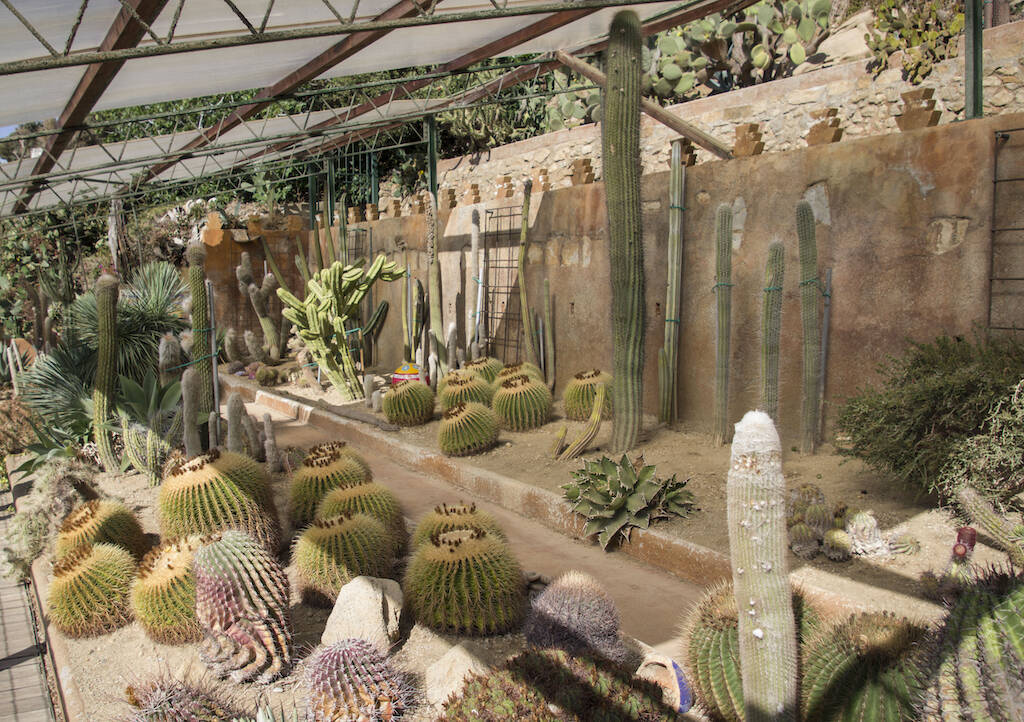The world of succulent plants is extremely vast. It follows that the cultivation needs of individual succulents can vary considerably from family to family and from genus to genus. With a concrete example, a cactus (plant belonging to the Cactaceae family) has extremely different cultivation needs compared to an Adenium obesum (succulent plant belonging to the Apocynaceae family). Likewise, large differences in cultivation can occur within the same family or between different genera of a single family. Here too is an example: an Ariocarpus (genus belonging to the Cactaceae) requires a cultivation regime, understood as substrate, watering, etc. very different from an Echinopsis (genus always belonging to the Cactaceae).
Without dwelling too much on the broad field of plant classification (here, if you want, you will find an article dedicated to this topic) and taking it for granted that the term “succulent plants” refers both to cacti and to many other succulent botanical families whose specimens have a different appearance from any other cactus, we are addressing a very “heartfelt” topic among novice growers. Even the grower who boasts a good knowledge of a given family, however, may find the following article useful, which recommends succulent plants (belonging to various botanical families) that are less demanding, more robust and simple to grow and therefore more suitable for those who are only now approaching the world of succulents. (…)
Premise

With a minimum of initial documentation and experience it is possible to grow all succulents without particular difficulties. Striking down to the essentials, the main cultivation elements to take into consideration are the substrates, watering, exposure and temperatures. In many cases these elements may be common to different types of succulents, for example the substrates, which for succulents must always be very draining, rich in inert materials and able to dry quickly. Other cultivation factors, however, can vary enormously from family to family but also from genus to genus. Some examples: cacti tolerate the cold well, while succulents originating from Madagascar or some African areas (e.g. Adenium, Uncarina, Pachypodium) cannot resist temperatures below 15-16 Celsius degrees. In the same Cactaceae family we find genera that are very resistant to cold (Echinopsis, Pediocactus, Opuntia) and genera that do not tolerate low temperatures (epiphytic cacti such as Epiphyllum, Schlumbergera, Rhipsalis or Melocactus and Discocactus).
This is why, for those who are only now approaching the cultivation of succulents, it is important to know which plants to start with in order to accumulate experience and best cultivate the newly purchased plants. The discussion, as mentioned, applies as much to cacti as to all other succulent families, since an enthusiast can be an expert in cacti and approach other families for the first time, such as Crassulaceae, Aizoaceae, Apocynaceae, Euphorbiaceae, etc.
Cactus
Let’s start with cacti. The first genera recommended to those who have no experience with these plants are undoubtedly Echinopsis, Gymnocalycium, Rebutia, Parodia (=Notocactus), Opuntia, Ferocactus. Be careful, there are many other cacti that are easy to grow but if you have to suggest some kind, you can’t go wrong with these. These are genera that group together very robust species, with few demands, capable of tolerating many cultivation errors and at the same time easily giving abundant and splendid blooms.
Attention: in some cases by clicking on the genus you will be directed to the downloadable PDF cultivation sheet of that same genus: a useful and detailed tool (4 pages) to deepen your knowledge of those plants.
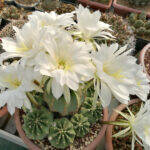
Echinopsis are very common plants, extremely robust and able to tolerate the cold very well. They are therefore ideal for those who do not have a greenhouse or winter shelter (cold environment, necessary to encourage flowering). Echinopsis can spend the winter outdoors, often even in damp soil, although it is advisable to place them under a shed or porch. In spring and summer they produce showy flowers with a large corolla and long calyx.
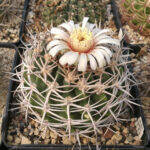
Gymnocalycium are plants of South American origin (Argentina). They are easy to grow, tolerate the cold well (not frost: it is best that they do not go below 5 Celsius degrees and always in dry soil) and have growth rates that are not particularly slow. Furthermore, the genus brings together a large number of very different species and even just by cultivating Gymnocalycium it is possible to set up a very respectable collection. They flower in spring and summer already 4 or 5 years after sowing.
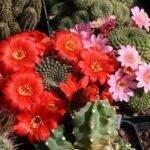
Other cacti recommended for those with little experience are the Rebutia. These are plants of South American origin, generally globose and with a tendency to cluster. Cultivation is very simple and their strong point are the flowers. In spring, these cacti produce an impressive quantity of medium-sized flowers of various colors depending on the species.
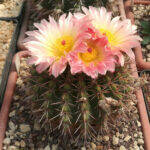
Parodia (once classified as Notocactus) are robust and very easy to grow cacti. They are satisfied with little care, have growth rates that are not excessively slow and produce beautiful blooms at the apex during the summer. Depending on the species, the flowers can be yellow, purple, red, orange. Even the thorns are variable from species to species and you can go from plants with slender and thin thorns to plants with very respectable thorns (P. maassii, P. buiningii).
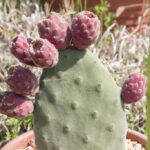
Opuntias are bombproof cacti. They grow quickly, tolerate intense cold, multiply extremely easily by cutting and in many countries they can grow in the open ground, even exposed to bad weather during the winter. They can reach large dimensions (especially if grown in open ground) and produce beautiful flowers with colors ranging from pink to red, from yellow to orange.
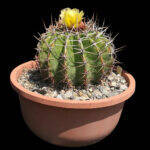
Finally, for lovers of thorns, the first genus to recommend is Ferocactus. These are very robust cacti, always equipped with notable thorns, easy to grow, as long as they are guaranteed plenty of light, and grow relatively quickly. Some species flower relatively early (F. macrodiscus, F. schwarzii), others require at least a dozen years to produce the first flowers. Many species of Ferocactus can reach considerable dimensions even if grown in pots. However, those who have little experience with cacti should avoid starting with Ferocactus johnstonianus and Ferocactus lindsayi: two slightly more demanding and slow-growing species.
Crassulaceae
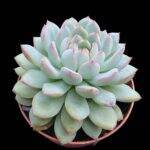
If you’re not particularly fond of thorns, the Crassulaceae family offers a wide variety of succulent genera and species. This family includes genera such as Aeonium, Adromischus, Crassula, Echeveria, Kalanchoe, Graptopetalum, Pachyphytum and the immortals Sedum and Sempervivum. Recommending a genus or a single species is almost superfluous: all Crassulaceae are easy to grow, very decorative, resistant and have good tolerance to cold. Having to indicate a couple of plants of this family, we can mention the very widespread Crassula ovata, called “jade tree”, with a small tree shape and oval, fleshy and bright green leaves. Another very interesting genus from an aesthetic point of view and easy to grow is that of Echeveria: plants of Mexican origin, very robust and with a characteristic rosette shape. Thanks to the high number of species and the many crossings carried out over the years, an infinite variety of Echeveria is available, with colored leaves that can range from blue to red.
Euphorbia
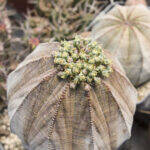
The Euphorbia family is very vast and includes very different genera. You can go from plants with a rounded stem without thorns, such as E. obesa, to plants with a columnar, curled shape, with leaves and thorns. Overall, the cultivation of Euphorbia is simple, but there is no shortage of species that require some experience. To begin with, E. resinifera, a very resistant and adaptable plant, E. enopla and E. obesa, beautiful and with an epidermis characterized by fascinating striations, can be indicated.
Agaves
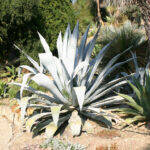
It’s hard to go wrong with Agaves. These are very robust succulents, extremely adaptable and very easy to grow. In reality, they can almost be ignored completely: if placed in draining soil they are satisfied with rainwater, they resist intense sun and cold very well, to the point that in many regions they are grown in the open ground. They have rather rapid growth rates and many species can reach considerable sizes within a few years, particularly if kept in open ground.
Aloe
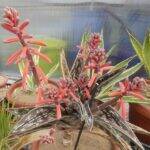
Even Aloes, in some ways similar to Agaves, are succulent plants suitable for those who are approaching the world of succulents and do not yet have much experience. Compared to Agaves, however, Aloes (succulent plants of African origin) tolerate intense cold less and should be kept at minimum temperatures no lower than 6-7 degrees. To begin with, you can start from the common but always elegant Aloe vera, a robust and relatively fast growing plant. Other very widespread and easy to grow species are Aloe arborescens and Aloe variegata, very easy to propagate and very generous with blooms.
Hoya
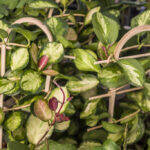
Finally, a succulent plant belonging to the Asclepiadaceae family. Hoya has seen its popularity grow among green enthusiasts in recent years. Aesthetically it has little in common with other succulents, but it is still a very decorative plant, also suitable for home cultivation and capable of producing beautiful cluster blooms. The star-shaped flowers are very particular, they have fleshy and smooth petals to the point that the Hoya themselves are also known as “porcelain flower” or “wax flower”. The plant produces long stems from which thick and fleshy leaves are formed, ranging in color from dark green to bright green, up to green streaked with yellow. Cultivation is simple and growth is relatively fast. Furthermore, Hoya also tolerate relatively low temperatures well, around 10 Celsius degrees.
SUBSCRIBE TO THE SITE – If you liked this article, subscribe to the site to have unlimited access to all the contents for one year or three months depending on the formula you choose. Here you will find terms and conditions.
SUBSCRIBE TO THE NEWSLETTER – If you want to receive the free newsletter every time new content is published, fill in the fields at this link!
Correlated articles
- Recognising succulents plants and cactus
- How to grow succulents
- Most frequent questions and doubts
- All cultivation cards in pdf
- Distribution of cacti and succulents: maps
© The texts, videos, photos and graphic elaborations of the site “Il fiore tra le spine” are original material and are covered by copyright. It’s forbidden to reproduce them in any way.


